The Question was about as fallible a superhero as ever existed. In the very first issue of his solo comic in the 1980s, he got the crap kicked out of him and caught a bullet to the middle of his forehead at point blank rage. He died. He got better. But he never was quite good enough. That’s why I love him.
Almost five months ago, I left New York City and moved to Texas, pulled by the gravity of my significant other’s new job. I went from riding crowded rush hour subways to the spacious loneliness of driving everywhere. I work from home now. I no longer come into an office every day and tap into the energy of co-workers and friends to talk through story ideas face to face.
Losing all the ambient human contact that I got throughout the day has been rough and I’ve felt a lot more isolated. I have material proof that things are better in a lot of ways — more space, a lower cost of living, great food and weather — but it’s been hard to own the benefits. This big life change has had me rethinking my sense of self, which was deeply tied to being a native New Yorker. I’ve been re-reading The Question Annual #1 a lot lately.
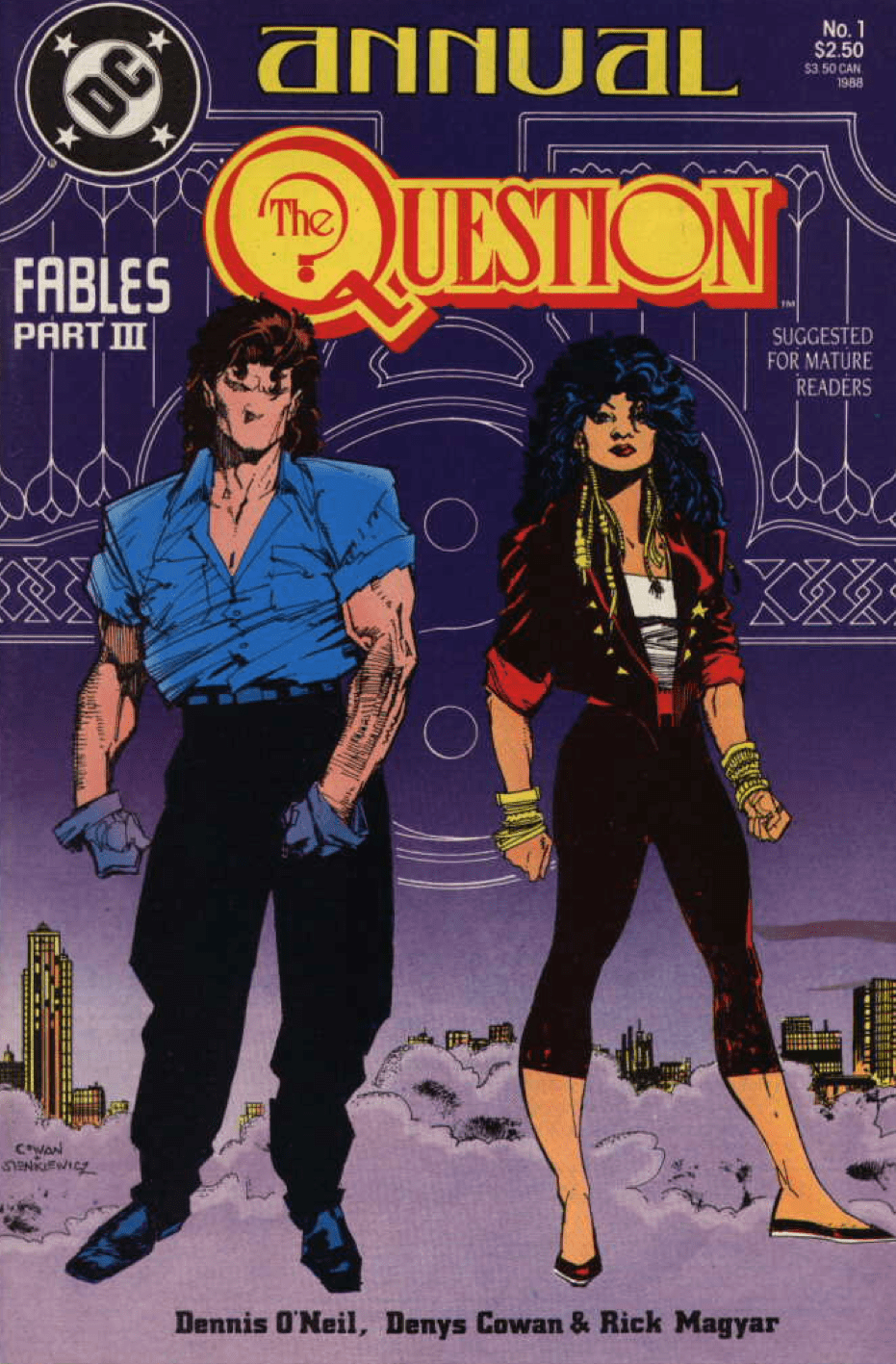
The last part of a smaller-scale crossover called “Fables”, the 1988 comic is my go-to reading material when I lose faith in myself. In “Fables”, Batman, Green Arrow and The Question are all visited by an elderly Japanese man called the O-Sensei. That character first showed up in the also-ran Richard Dragon, Kung-Fu Fighter series, published when DC was trying to cash in on the 1970s martial arts movie craze. “Fables” has the O-Sensei telling each hero a parable, with the promise that they will come to his aid in the future if the story proves useful for them.
The multi-character storyline came midway through DC Comics’ reinvention of the Question, picked up as part of their acquisition of some properties from defunct Silver Age publisher Charlton Comics. The Question was dreamt up by legendary artist Steve Ditko in 1967 after his quietly furious break with Marvel Comics over the thematic direction of Spider-Man, who he co-created with Stan Lee.
Still alive and reclusive to the point where he’s become a sort of myth, Ditko is a devotee of Ayn Rand’s Objectivism philosophy. In his original iteration, The Question was the alter ego of Vic Sage, a TV news broadcaster who delivered cold, unfeeling justice to criminals, not caring if they lived or died.
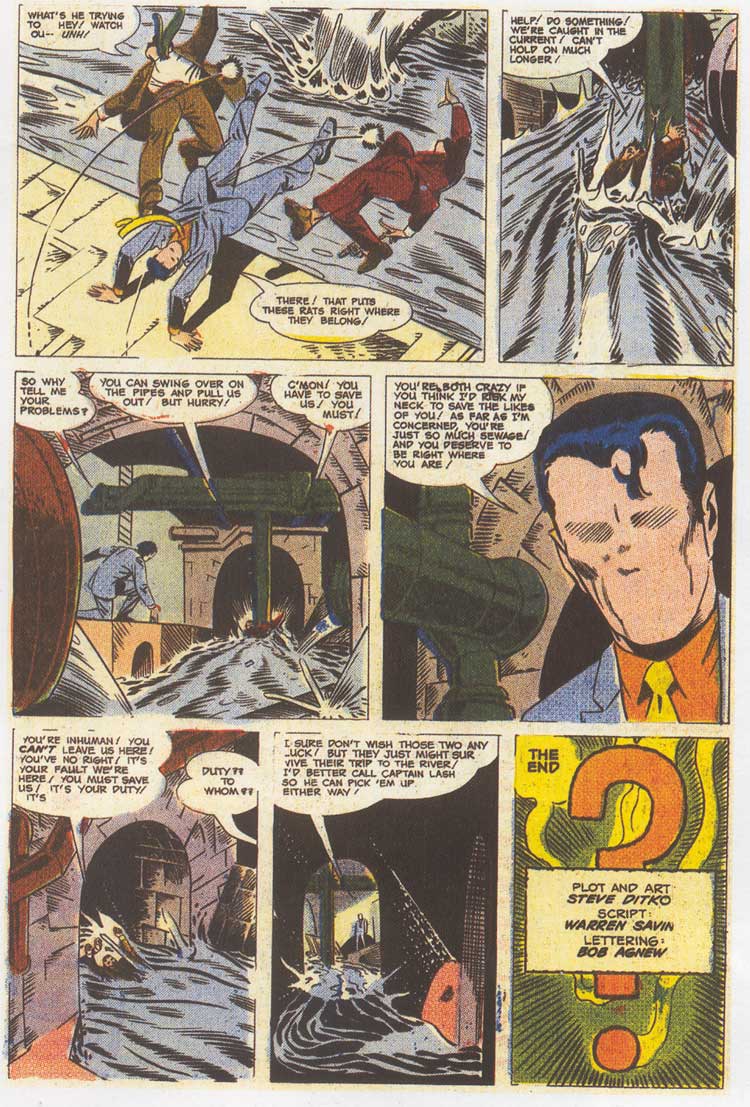
After DC acquired The Question, the new series featuring the character was slated to be written by Denny O’Neil, who was in charge of the Batman family of titles. O’Neil didn’t want to write a hero who espoused the harsh Objectivist ideals that Ditko believed in. So he killed Sage in The Question #1 and resurrected him in the next issue, slowly reinventing the man who wore the faceless mask.
With artist Denys Cowan drawing much of the 36-issue run, Vic Sage became a compulsively curious crimefighter prone to frequent bouts of existential exploration, someone who meditated before and after cracking skulls.
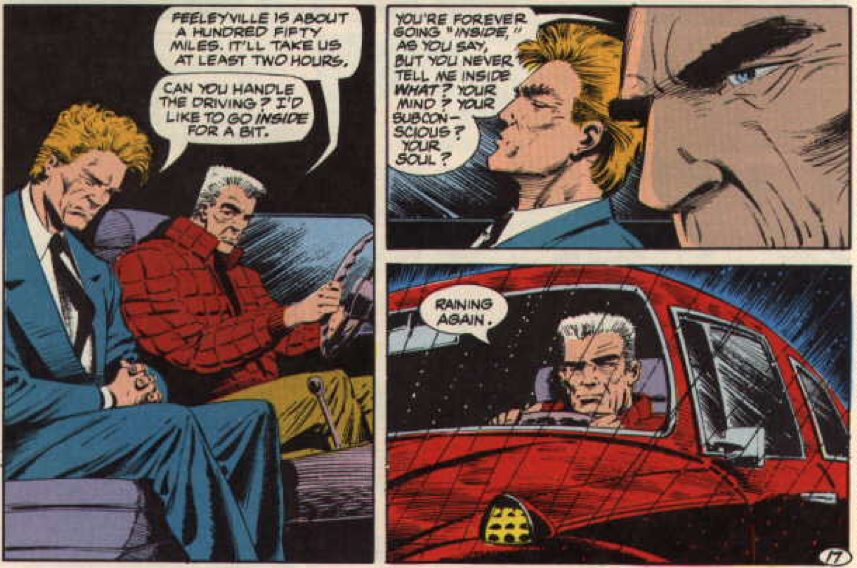
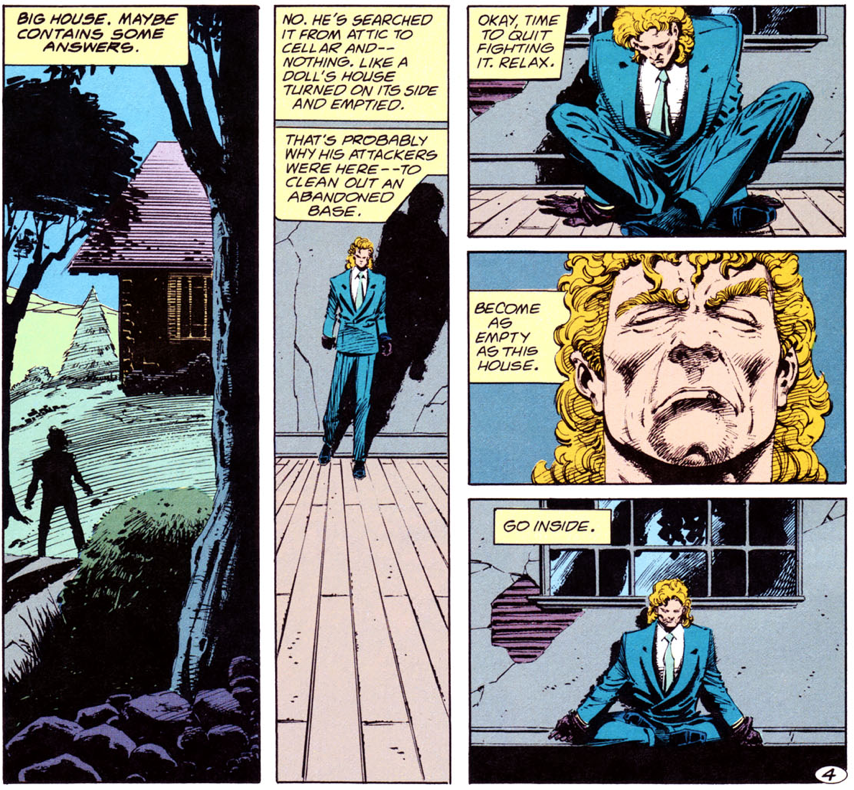
There’s a strong whiff of Orientalist exoticisation in the “Fables” crossover, what with its recurring theme of inscrutable Asian martial arts mysticism helping out white main characters. But, favoured-writer-status and nostalgia aside, I made the choice long ago to let O’Neil slide on the cringier parts of “Fables”. I know enough about his personal life to know that he didn’t just use ‘old kung-fu master helps out clueless white dude’ tropes because they were easy.
Back when there were multiple comics magazines on newsstands, O’Neil talked candidly in interviews about his struggles with alcoholism and depression. From the outside looking in, it looked like the study of Zen Buddhist philosophy was part of the healing that helped O’Neil come back from the brink of his own personal abyss. I don’t have first-hand corroboration of this but the personal mythology I’ve built around O’Neil makes this feel right. This is my fandom at work.
I’ve written before about my love for O’Neil and his Batman work. To my mind, his ear for dialogue and knack for descriptive scene-setting captions are likely a testament to his time as a newspaper reporter. They also reverberated with the tenor of someone who tried out meditation and mindfulness way before they were trendy.
The recommended reading lists in letters pages for The Question included books like The Wandering Taoist, Chop Wood, Carry Water: A Guide to Finding Spiritual Fulfillment in Everyday Life or Zen and the Martial Arts. O’Neil was on a journey, the same one he was putting Vic Sage on, and he wanted readers come along with him.
In another old interview, O’Neil talked about the plans DC had to integrate the Charlton superhero characters into a post-Crisis On Infinite Earths DC Universe. The possibility of him reintroducing the ultra-powerful Captain Atom in a series came up and O’Neil said the reason he turned it down was because he was more interested in the idea of human perfectibility than the idea of a perfect human. Vic Sage’s fitful philosophical brand of heroism was his way to explore that idea.
The “Fables” crossover even extended the exploration of that human perfectibility theme to the Batman. In the first part of the trilogy, Batman is at his cold and efficient best when ending the threat of a chemical attack by The Penguin based on research by Ra’s Al Ghul. The O-Sensei’s travelling companion Shiva is driven to sharpen her deadly skills wherever she goes and Batman — as perfect as a combatant as exists — is too masterful for her to ignore…
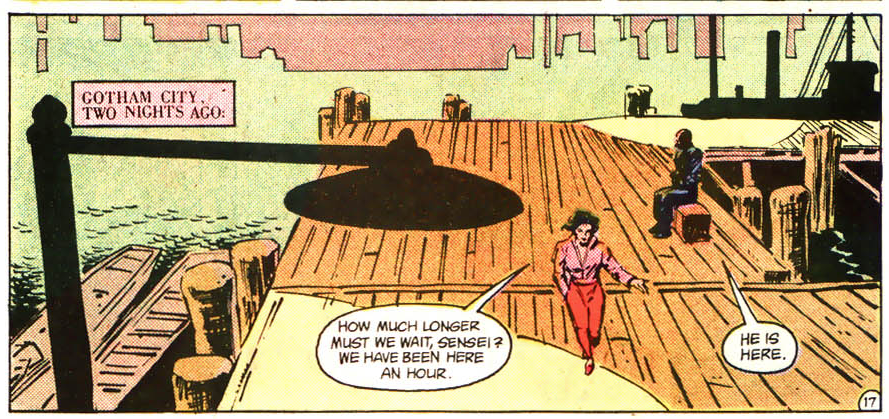
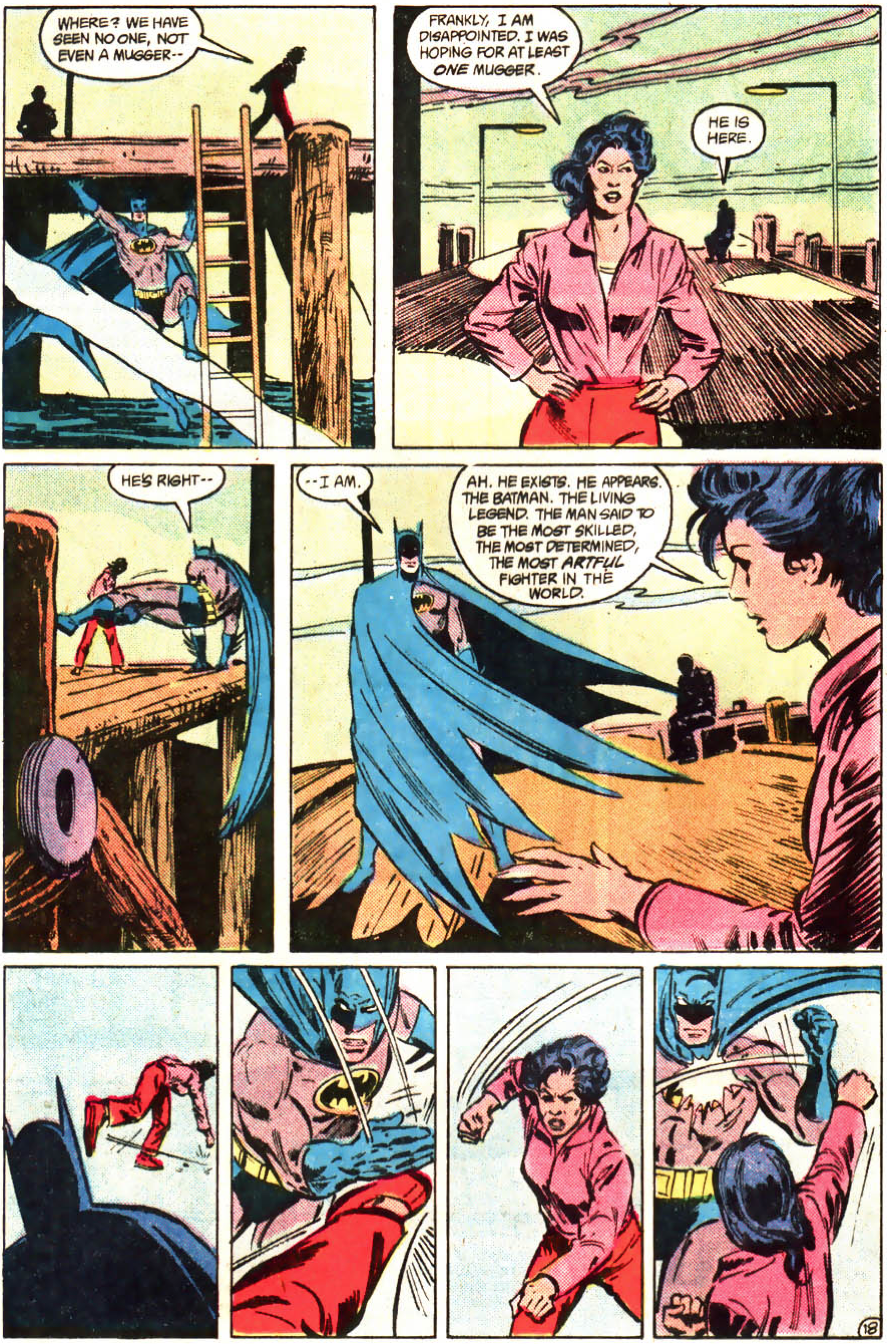
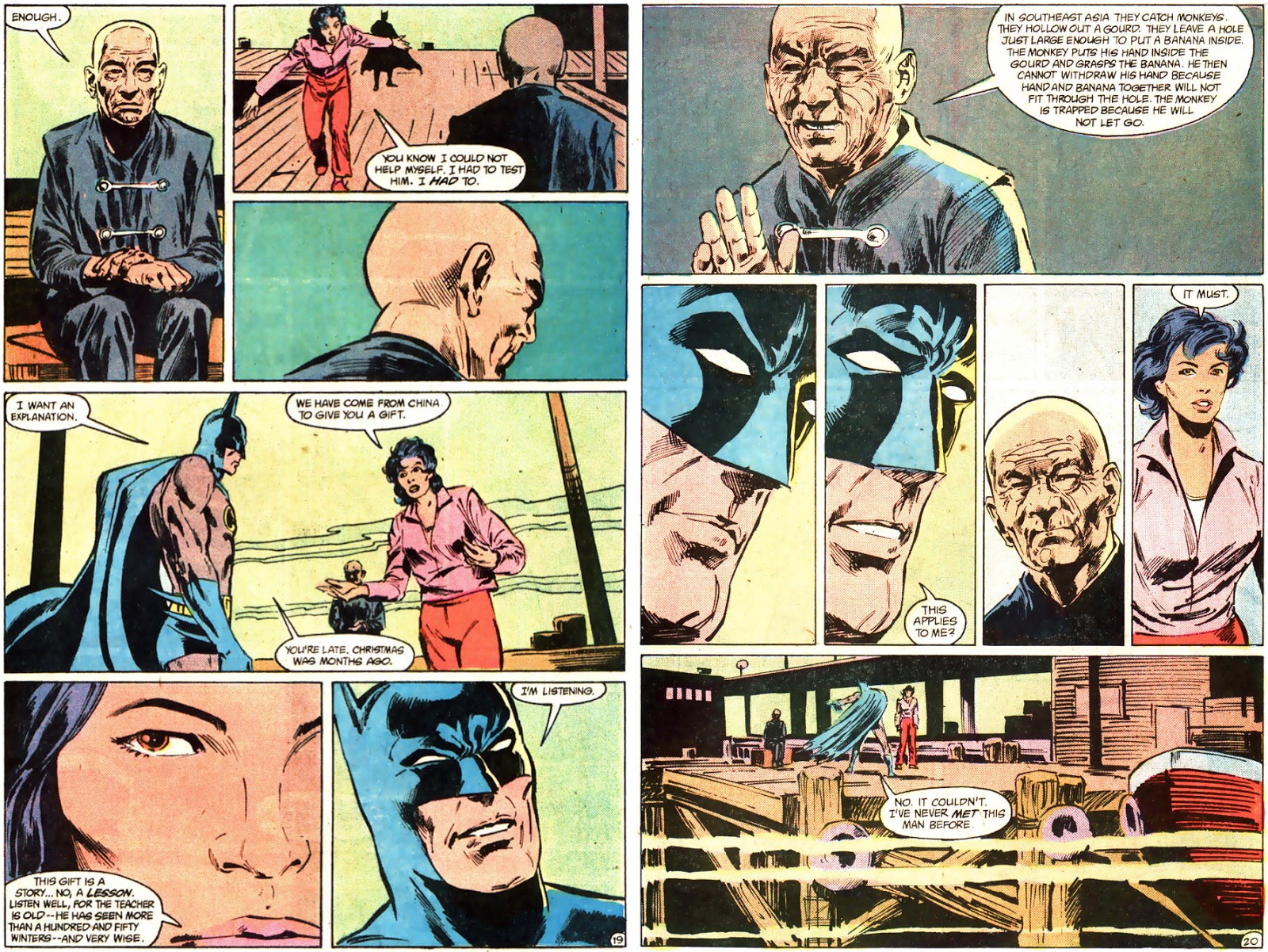
Batman is already perfect, isn’t he? The crushing end of this story answers that by showing Bruce Wayne realising the way in which he’s trapped himself. (Another, more indirect case of Ra’s Al Ghul getting under Batman’s skin.)
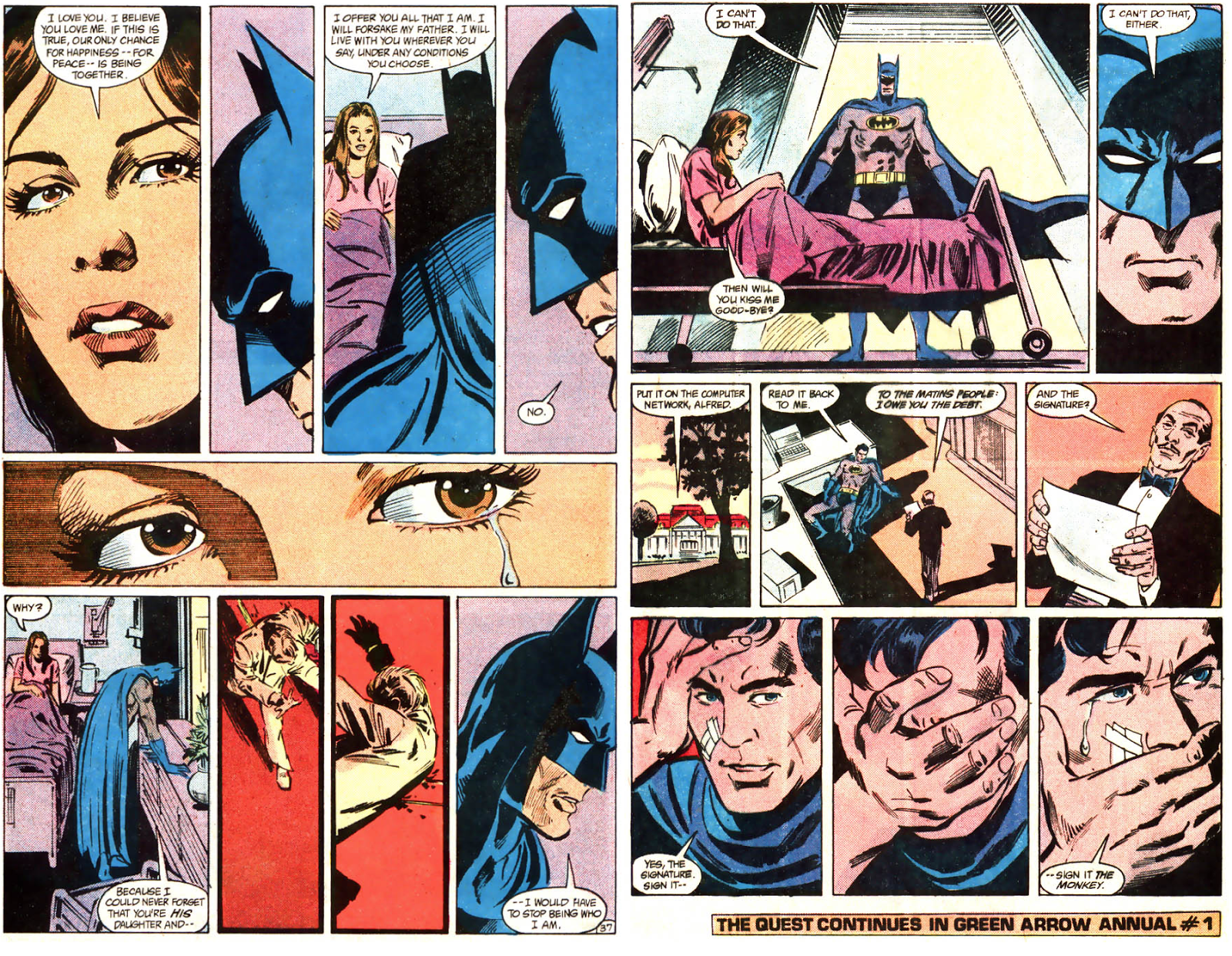
Vic Sage wasn’t a man with years of obsessive training under his belt like the Batman. He was a very good martial artist and a man driven by the need to know more about the world that surrounded him. He was cranky, sarcastic and had crappy self-esteem a lot of the time. When it’s his turn to get a parable from the O-Sensei, he’s met with silence. The heroes assemble to repay their debt to the the O-Sensei, which requires them to enable the posthumous reunion of the dying old man with his wife’s remains on a heavily guarded island. Batman explains that he’s figured everything out. Because he’s Batman.
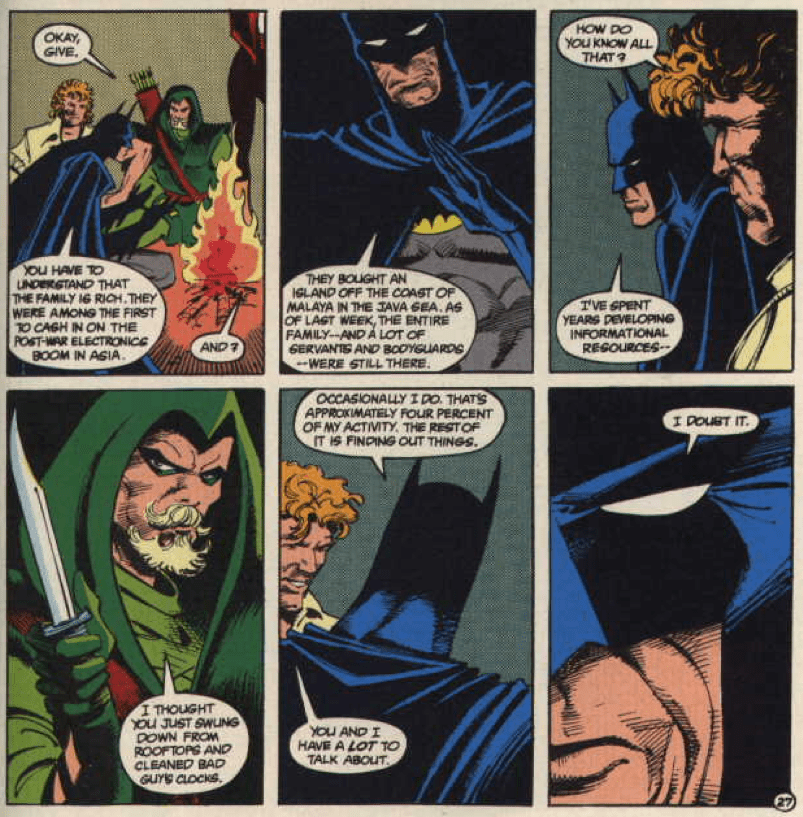
Vic asks Batman to sit this one out because he needs to satisfy his burning curiosity. He also need to just feel good at something, anything, which is hard to do when the hyper-competent Dark Knight is around.
I started drafting this piece months ago and have re-read The Question Annual #1 dozens of times. My eyes still water, the throat lump still forms when I hit this issue’s last few pages. Vic’s attempt to be a hero crumbles. He gets knocked out after the heroes’ boat capsizes. Green Arrow needs to fish his unconscious body out of the ocean. Worst of all, the task that he’d asked Batman to leave to him — being the muscle that helps get the O-Sensei — remains incomplete. Vic’s attempt to graft himself onto the meaning he so desperately wants to embody fails.
After the O-Sensei drowns, Green Arrow, Shiva and The Question get to the island they were trying to reach. Once there, they discover that the remains of the O-Sensei’s wife are not where they were supposed to be. Dejected, Vic stalks away into the night.
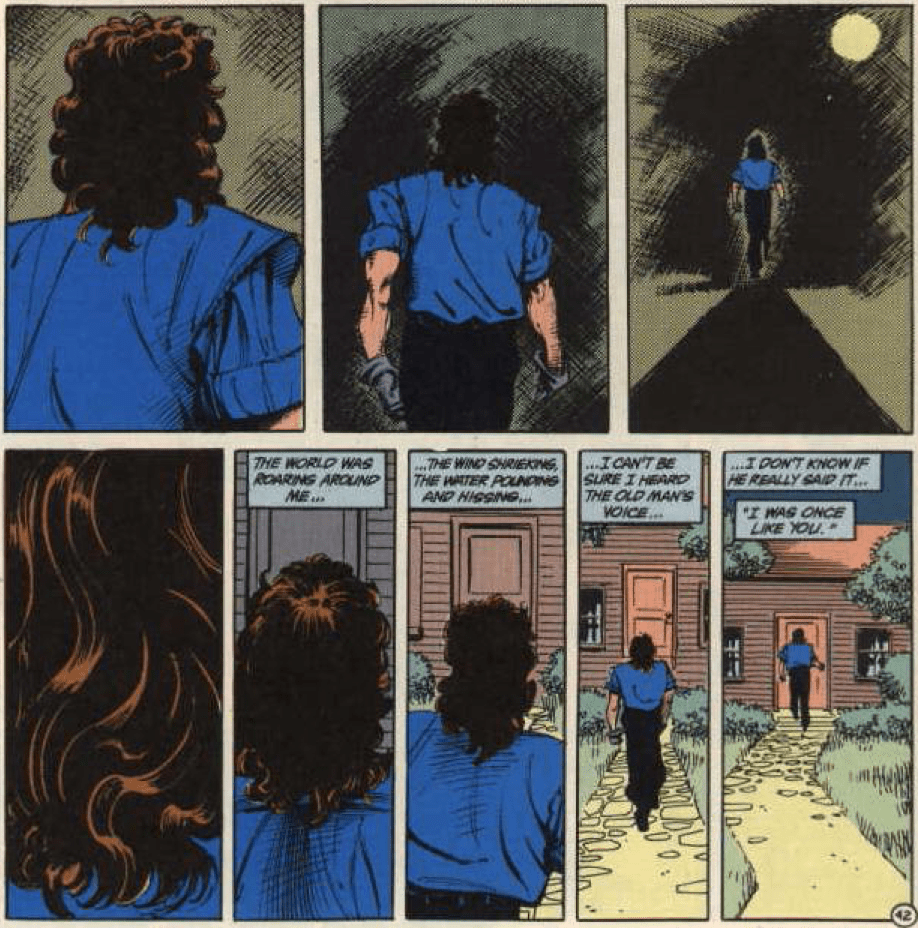
That’s not the end, though. A letter from Batman (of course!) reveals that, despite all his insecurities, Vic managed to do the thing he set out to accomplish.
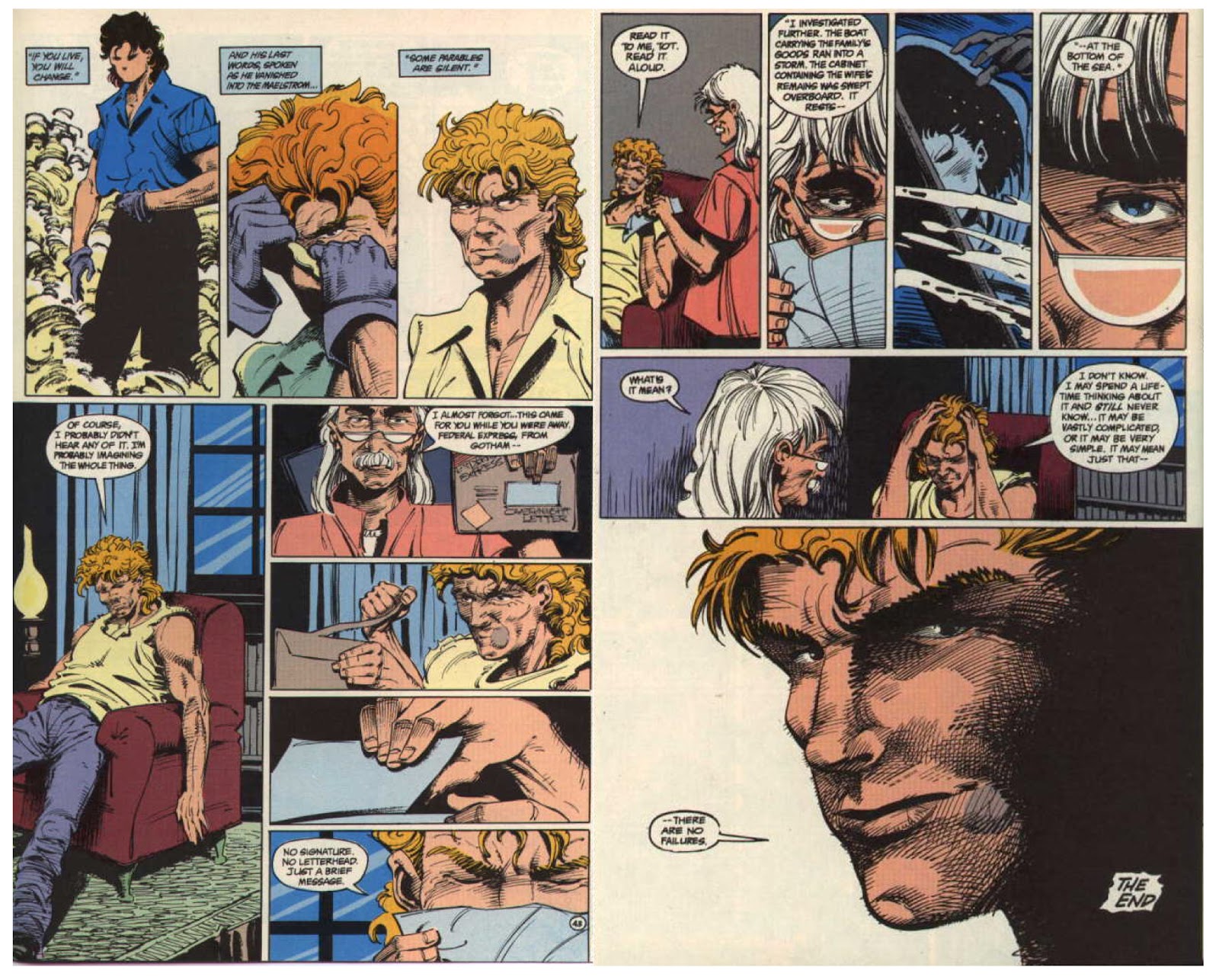
DC Comics is marching on towards another big editorial event that will hopefully reinvigorate their fictional universe. Vic Sage died years ago and passed the faceless mask onto Batman supporting character Renee Montoya.
Although he’s a cult favourite character that’s been reinvented for well-loved adaptations like the Justice League Unlimited show, the Vic Sage iteration of Question probably won’t be resurrected in the post-Rebirth DC Universe. (That name’s been used for a different character introduced after DC’s 2011 New 52 reboot, so chances are probably nil.)
Vic Sage wasn’t always as good a superhero as he could be. In both his identities, he’d lose his temper and make bad decisions. The Question was presented as a second, maybe, third-tier martial artist in the DCU of the 1980s and 1990s. He could kick arse much better than most heroes but the concern with Vic Sage was always, “to what end?” Crime wasn’t the issue so much as reconciling what drove humans to it. His one-man war to keep Hub City from becoming the worst kind of lawless urban wasteland was a slow-motion failure, ending with his mentor airlifting him away from the hometown he couldn’t save.
I still think of Vic Sage as a hero, though. Through it all, he never stopped interrogating himself and his beliefs. I realise that he appeared in a power-fantasy adventure medium that avails itself of saccharine synchronicity tropes and pop philosophy to offer easy entertainment comforts. Nevertheless, Vic Sage is a fictional character who’s become spiritually important to me, seething with the urge to know who he was, where he fit in and how he could impact the world around him.
Living away from the only place I’ve ever called home, I’ve been thinking on some of those same conundrums. There’ve been more, too: how do I sincerely answer my kid’s curiosity about God when I’m ambivalent about so much of the Catholic dogma I grew up with? Should I readjust my requirements for companionship when I spend so much time alone now? Can any one thing fill the voids I feel at the moment? Is this place where I’m going to spend the rest of my life?
I’m muddling through my process as best as I can and stumble into dark corners that are hard to find my way out of. The curling, question-mark wisps of gas that changed Vic Sage into the Question remind me: “If you live, you will change.” It’s a slippery mantra to believe in, especially because I know it can be dismissed as just so much cotton candy for the soul.
I’m holding on, though, because I’m open to the surprise moment that tell me in its own cryptic way that there are no failures.
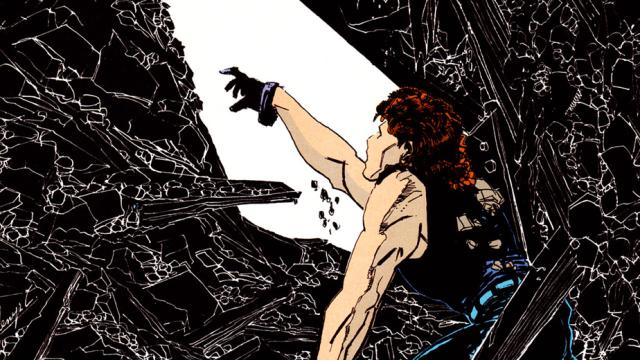
Comments
2 responses to “The One Superhero Comic I Always Read When I’m Depressed”
I like reading old comics as well. But for the ads. I like looking at the old ads in comic books. Anyone else?
I like the ad breaks left in old taped shows.
Had never heard of this one, but it sounds very interesting, will have to find a copy